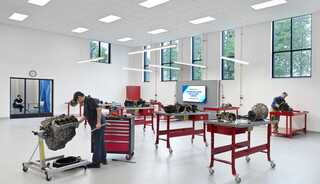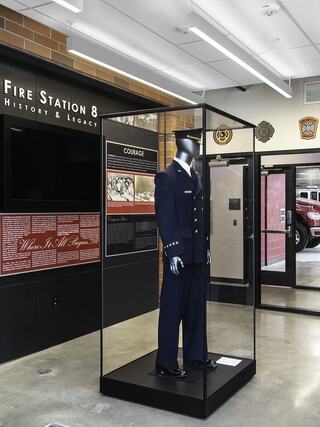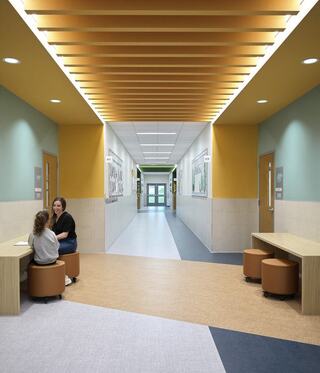
Bringing Architecture to Life: Victor Rivera Andino on the Power of Renderings
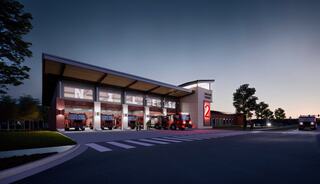
When FGMA Designer Victor Rivera Andino talks about renderings, a highly realistic 3-D image that brings an architectural design to life, his passion is contagious.
To him, a rendering isn’t just a polished image — it’s a story, a glimpse into a future space that has the power to inspire, persuade and bring communities together.
Victor’s journey into architecture began in Puerto Rico, where he first encountered the field during a university presentation. One slide changed everything: an architectural rendering. “That’s what I want to do,” he recalls thinking. Despite the highly competitive admissions process, Victor earned his spot in the School of Architecture at the University of Puerto Rico, where he quickly discovered that renderings were more than a tool — they were an art form.

Renderings as Storytelling
“Renderings are stories,” Victor says. “They’re not only about showing a building but about capturing the emotion of what that building means for people.”
He describes a recent project where he envisioned an image of students tossing graduation caps in front of a new school. The image was created to show voters ahead of a referendum just how impactful their investment in the future of their schools could be. “It’s not just a building,” he explains. “It’s the backdrop for a student’s journey, growth and celebration.”

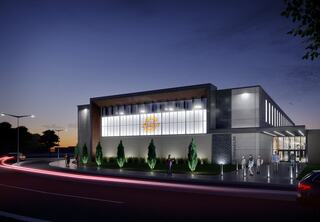
This storytelling perspective changes how communities respond. Many people struggle to interpret floor plans or sections, but a rendering makes a future space tangible. At a board meeting for Community High School District 218 that featured a rendering he created, Victor remembers the reaction vividly: “People were gasping. They couldn’t believe it was the same space. That’s the power of a rendering.”
A Tool for Design and Decision-Making
Renderings aren’t only about presentation. They’re also powerful design tools. Victor describes a project for North Chicago School District 187 and Kids Above All, where the team tested different exterior materials for a new school addition. Renderings helped the community see how each option would look within the neighborhood context, easing concerns about scale and character.
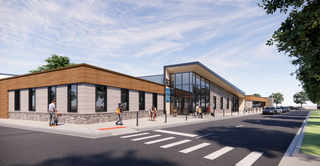
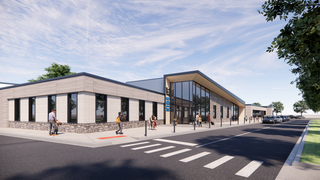
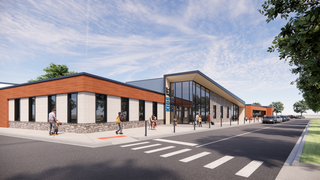
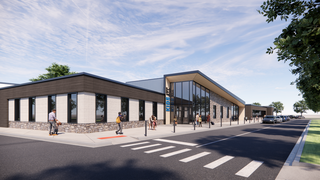
Kids Above All Final Material Selection
They’ve also been used to demonstrate technical solutions. In one project, Victor created an animation to show how classroom design reduced glare and energy usage by shaping the building to block direct sunlight. “If you tell someone that in words or show them a plan, they might not get it,” he says. “But when you see the sun move across the space, it makes sense instantly.”
Technology That Changes the Game
Advancements in rendering software are accelerating these possibilities. Tools like Enscape allow Victor to create real-time renderings in seconds — a stark contrast to the hours or even days traditional methods once required. This speed means clients can see immediate results when they request changes, whether it’s swapping a brick color or adjusting lighting. Victor believes the in-house ability to produce fast, high-quality visuals is what makes a real difference in school design and community engagement.

Timelapse of sunlight and shadows falling on a rendered building design
Elevating the Everyday Image
What makes Victor’s renderings stand out is their humanity. He goes beyond polished surfaces to add life — people in auditoriums, cars in parking lots, children playing outside. “Adding people gives scale and context,” he explains. “It makes the image feel real, like a snapshot of everyday life.”
This approach not only improves design communication but also builds excitement. Teachers reviewing a rendering of their future school once remarked, “I feel like I’m in Europe.” Victor laughs at the comparison but values what they reveal — renderings, done right, connect with people emotionally.
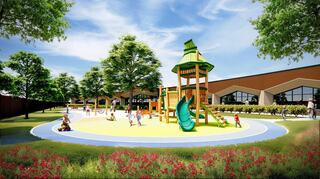
KAA playground rendering including children playing and using equipment to give scale and context.
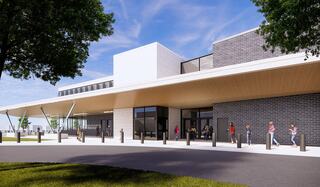
Rendering of a student entry including people in the space to provide sense of scale and context.
A Vision for the Future
Today, Victor balances his time between design, technical work and renderings. But his vision is clear: to expand FGMA’s rendering capabilities so every project benefits from the power of compelling visuals. He has already begun leading classes across the firm, teaching colleagues how to elevate their images and use renderings to tell stronger stories.
In the end, Victor returns to what first captivated him years ago: the magic of seeing a building before it exists. “I’m fascinated by animation, by building worlds in 3D,” he says. “Renderings let us bring that to architecture. They show what’s possible — and that can change everything.”
News & Insights
All Articles

Downers Grove Police Department Receives Silver in 2025 Officer Station Design Awards
